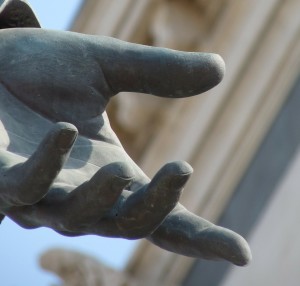 This guest post is written by a beautiful, courageous, intelligent, witty and wise-beyond-her-years girl named Natalie. In her words, she is a “Catholic home-schooled 16-year-old who loves St. Pope John Paul II’s Theology of the Body, Jane Austen, books, good coffee, Batman, a good laugh, and pranking her friends!”
This guest post is written by a beautiful, courageous, intelligent, witty and wise-beyond-her-years girl named Natalie. In her words, she is a “Catholic home-schooled 16-year-old who loves St. Pope John Paul II’s Theology of the Body, Jane Austen, books, good coffee, Batman, a good laugh, and pranking her friends!”
 As a teen girl growing up in a body-obsessed culture, I can say in all honesty that I have really felt the effects of it. Airbrushed models, celebrities with “perfect bodies,” and weight loss commercials are constantly blared at me from TV, store ads, and billboards. As a young girl viewing this twisted idea of beauty, I now realize, as I reflect, that it has had a great impression on me, and consequently the life of everyone around me. Read More →
As a teen girl growing up in a body-obsessed culture, I can say in all honesty that I have really felt the effects of it. Airbrushed models, celebrities with “perfect bodies,” and weight loss commercials are constantly blared at me from TV, store ads, and billboards. As a young girl viewing this twisted idea of beauty, I now realize, as I reflect, that it has had a great impression on me, and consequently the life of everyone around me. Read More →

 At Easter, we celebrate the ultimate victory of Joy over suffering. Christ is Risen! Alleluia! Death, where is your sting?
At Easter, we celebrate the ultimate victory of Joy over suffering. Christ is Risen! Alleluia! Death, where is your sting? By now some of you have likely come across the New York Times
By now some of you have likely come across the New York Times